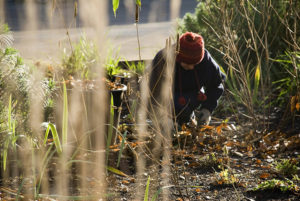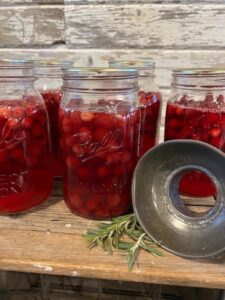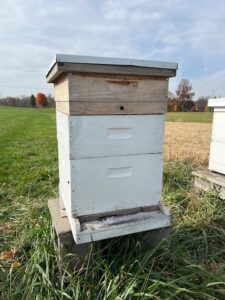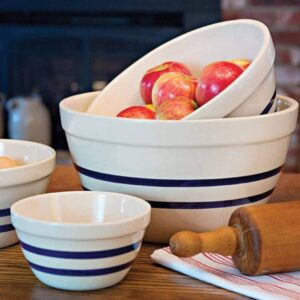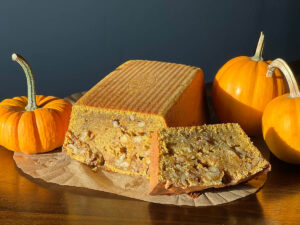 Even though it makes sense that your tomato vines should be at their largest and lushest on the longest day of the year –June 21st— to get the very most out of summer’s life-giving sunshine, they probably won’t get that enormous until July or maybe even August. Their growth depends on photoperiod (how much light they get every day), climate (how warm and how cold – the smaller the difference, the better), how much they’re watered, and how much they’re fed.
Even though it makes sense that your tomato vines should be at their largest and lushest on the longest day of the year –June 21st— to get the very most out of summer’s life-giving sunshine, they probably won’t get that enormous until July or maybe even August. Their growth depends on photoperiod (how much light they get every day), climate (how warm and how cold – the smaller the difference, the better), how much they’re watered, and how much they’re fed.
As regards nutrition, around every two weeks I give my tomato vines a light fertilizing with liquid fish emulsion. This is a thick slurry of just what you might think, namely old rotten fish mush from the commercial fishing trade’s copious waste; it comes in a concentrated form in a gallon jug. You mix this with a unit quantity of water (usually 1 tablespoon per gallon) and apply it with a watering can, or just out of a bucket. I mix it a little bit lighter than indicated on the jug’s instructions, and give it to the plants as a substitute for the second watering.
Yes, it smells pretty ripe – all right, it stinks— but the smell wears off after a day or two (except from the watering can) and the plants take it up very quickly and efficiently. It’s available at any garden center. I am told it’s often used as a spray fertilizer, but I don’t do foliar feeding of my vines, and frankly, shpritzing it around is about the only thing that might make the experience smell any worse.
Fish emulsion is a mixture of nutrients, described on the label with a ratio of “4–1–1” or something similar. These three numerals stand for the relative percentages by weight within this material of your plants’ three major nutrient needs: Nitrogen (N), Phosphorus (P), and Potassium (K), in that order. The higher the number, the higher the material’s percentage of that nutrient.
But how much phosphorus (or nitrogen, or anything) do I need to use?, you very reasonably ask. It’s impossible to guess accurately if you don’t know where you’re starting from. So it’s a good idea to have your garden soil analyzed in the lab, even if just the one time. Your County Extension Agent can be very helpful in this regard. You want to find out what your soil’s pH is, and the relative levels (low, medium or high) of Nitrogen, Phosphorus and Potassium. If the testing service offers and you can afford it, find out about your “secondary nutrient” (Calcium, Magnesium and Sulfur) levels, too.
If you’re a do-it-yourself type, you can purchase a very cool Soil Testing Kit from the LaMotte Chemical Corporation (http://www.lamotte.com/) and determine this vital information right away, on your own back porch.
Ordinary litmus paper from the pharmacy can indicate the soil’s pH. If your soil is too acid (under 4.3), some wood ashes will help “sweeten” it. If it’s too alkaline (over 6.3), add peat moss to acidify it.
Many different organic fertilizers are available that are rich in one nutrient. So if, for example, your soil test determines you’re low in Nitrogen and Phosphorus, but fine in Potassium, add individual fertilizers for extra N and P, but not K — or you can add a blended fertilizer that is numbered “0” in the third position.
If you don’t want to bother, just keep these two general rules for tomato nutrition in mind:
1. Acid soil (lower pH) is better than alkaline (higher pH), which means when you set out your plants into the garden, sprinkle some peat moss into the hole first.
2. It’s better to under-fertilize than over-fertilize. Obviously if they’re spindly, slow-growing or pale colored, your vines need more nutrient. Mix the fish emulsion the same way, but give it to them more frequently. If they’re turning brown at the tips and edges of their leaves, these plants are getting too much nutrient, so stop fertilizing altogether and they might yet survive.
I have read some guides about the benefits of pruning your indeterminate tomato vines. Apparently it is thought that removing some of the plant’s foliage –the material which collects sunlight and converts it into vital food via the mystery of photosynthesis— will somehow result in better tomatoes. If this notion isn’t fundamentally nuts, it sure sounds like it to me, and as such I have never pruned a tomato vine. Sure, if a branch becomes broken or withered or diseased, I snip it off, but only then. Removing foliage not only diminishes the vine’s capacity to feed itself, it can expose the fruit to direct sun and result in “sun-scald,” where the skin turns thick and pale colored.
Step outside some August morning, and have a good long close look at your glorious tomato vines twenty minutes before the sun comes up. Thick and lush and a revivingly vivid forest green, the leaves and heavy branches contrast stunningly with the dark orangey red of the hanging fruit peeping from beneath; the plants’ smell is earthy and herbal with a unique sweet-and-sour tang. The vines seem laden with the heavy moisture of the dawn, but an hour after the sun is on them the leaves have spread out and brightened as they drink in the day’s radiance. Only now does the full depth of the ripe fruit’s utter REDNESS (well, in the case of the RED varieties, anyway) come forth.
Pick one; pick a perfect ripe home-grown tomato, hold it in the palm of your hand, out in full sun, right in front of your face. Try to get your bedazzled eyeballs to focus properly on that matchless living hue.
Close them, and while the bedazzlement is still upon you, take an ennobling bite of that perfect red ripe home-grown tomato. Cool to the touch, it is firm, but yielding … wet … lively … beguiling … rich … citrus tart sweet vegetal. Yow! An almost indescribable taste! The only thing better would be, to taste it again.
Oh indeed, and what of next year? Well, the beginnings of it are in your hand (and your mouth) right now, and there’s no time like the present to see to that bountiful future. Saving your own tomato seeds isn’t difficult, and it may be the only way you can get new seed for a particularly fine and rare cultivar, such as those no-name, juicy, softball-sized beauties your neighbor’s grandparents started growing back in 1933. Just follow the steps carefully, and you can recover an astonishing amount of viable seed in a single season that may feed you and half a dozen gardening friends for many years to come.
We’re assuming that your tomato variety has been grown on its own, in adequate isolation from other varieties, not side by side with them. Even though tomato flowers are obligingly self-pollinating under normal circumstances, keeping a cultivar pure means going to some extra length if you intend to collect and re-use the seed.
First, pick at least six tomatoes of the variety in question, and from at least four or five different plants. If you’ve only grown one single vine, seed saving is still possible but not recommended.
The tomatoes you choose should be selected first because they are at their absolute peak of ripeness or slightly past it, and second because they are the best examples of that cultivar that you can spot in the patch, not just the biggest. Make sure they’re not perfectly identical, either. In order for the future seed-stock of this variety to be sound it must contain some modicum of genetic diversity within its recognized strain; this means collecting different fruit, and from different plants. Genetic diversity helps ensure that not every resulting future vine will be equally susceptible to disease or pests or less-than-ideal growing conditions.
Take your half-dozen-plus tomatoes into the kitchen, rinse them off, then thoroughly wash your hands and clean your fingernails. (Note: if you use plain soap such as “Ivory,” it’s a riot to watch the foam come up as you lather; if you’ve just been in the tomato patch, it’s bright green!) Halve each tomato equatorially, which will expose the labyrinthine structure of walls and chambers within. After admiring this, firmly but gently squeeze out the liquid yuck from each half into a clean mixing bowl; try not to squeeze out much solid stuff as you’ll notice the clearish goop contains all the seeds. Squeezing this out can be comically easy with some tomatoes, but devilishly tricky with others like the so-called “paste” varieties. If you need to, scoop it out with a baby spoon.
Since they probably look pretty beat up by now, take the de-seeded tomato halves and mince them with onion, cilantro, and a few jalapeños for fresh “salsa cruda” to sustain you through the following steps.
Vigorously stir your bowl of goop as you add a cup or two of water; note which seeds immediately float, skim off and discard them as they won’t be viable. (The majority should not be floating!) Pour the goop into three or four quart-size canning jars, filling them no more than a third full. Put a 6×6 inch piece of cheesecloth, old window screen, or some wax paper with a few holes poked in it on top of each jar and screw on the band to hold it in place.
Set these jars in a warm shady spot, hopefully out of the way because they can start to smell pretty rank. Within a day or three the vital process of fermentation will be taking place and the goop will become cloudy and develop a scum. This natural process breaks down the covering on the seeds which prevents them from sprouting inside the ripe tomato while it’s still on the vine, and it eliminates any pathogens acquired since then. After four or five days, fermentation should be done; a layer of nasty looking muck will be covering the goop. From the side of the jar you should be able to see the seeds at the bottom, with a layer of liquid and then the moldy glop on the surface.
With a big spoon, lift off the mold layer from each jar and discard it in the compost heap. Then combine all the remaining goop and seeds into one jar. Wait until it settles, and pour off half the liquid as well as any floating dreck.
Pour what remains into a big strainer and run cold water over it to rinse off the seeds. Stir with a clean spatula (or your equally sparkling fingers) then allow to drip-dry as you find a large clean plate. Turn the strainer’s contents onto the plate with the spatula and use it to spread out the seeds so that none are touching each other. Don’t use a paper plate or a paper towel, because they’ll stick to it irremovably. Put the plate in a warmish spot with good air circulation, and in a few days the seeds will be quite dry.
For an interesting gift idea, you might take a few of those wet seeds and spread them out on a paper towel. When they stick permanently to it, snip up the paper towel with scissors so there are a couple of tomato seeds on each bit. These paper towel bits are easy to handle, such as to drop into a Christmas card for a welcome gift to the green-thumbed on your list. They can even be planted paper towel and all.
Seed germination takes place in the presence of moisture, heat and light, so keeping your tomato seeds away from these things will preserve their vitality, usually for many years. I have found that old 35mm film capsules are ideal for this and (for the time being, anyway) they can be had free for the asking from any 1-hour Photo Shop. Collect your dried seeds into a film capsule –one of the black and grey Kodak ones is best— cap it up, label it conspicuously with the variety, the month, and the year it was collected, and put it into the refrigerator. There they shall sleep the slumber of the just.
And then, next February or March, you and your favorite fellow gardeners with whom you have shared your treasure can go back to Part 2 of this saga, and start the process over again.
Happy harvests!
Previous articles in this series:
Growing Tomatoes, Part IV: Productive Maturity
Growing Tomatoes, Part III: Dealing with Juveniles










